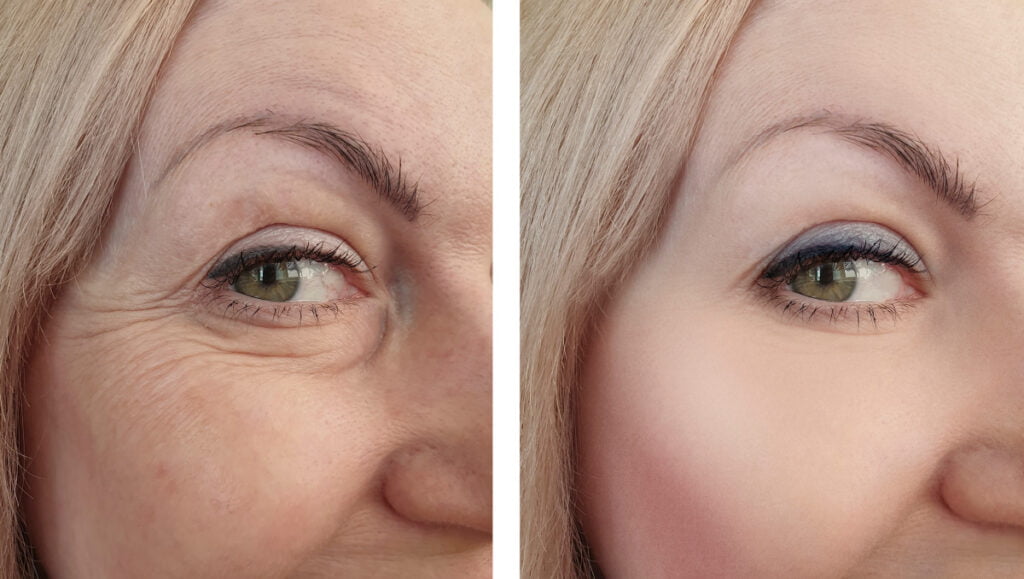How to Look at Cosmetic Surgeons’ Social Media
| ABCS
Social media can be a valuable tool for prospective patients looking to learn more about cosmetic procedures and the surgeons who perform them. Knowing what to look for—and what to avoid—can help you make a safe and informed decision about your care. Here, the American Board of Cosmetic Surgery (ABCS) shares how to critically evaluate surgeons’ social media profiles to find the best cosmetic surgeon for your needs.
Before and after photos: What to look for
Beauty may be in the eye of the beholder, but there are some tried and true methods for assessing before and after photos when scrolling through a cosmetic surgeon’s social media.
Variety in procedures
Look for before and after photos of the procedures you’re considering and photos of different types of procedures or treatments. A surgeon who posts a variety of results demonstrates versatility and experience across different types of cosmetic enhancements.
That said, it’s not uncommon for cosmetic surgeons to gravitate toward a certain procedure or procedures in a particular body area that they enjoy working with. In these cases, if their niche procedure or treatment is not what you’re interested in, it may be wise to consider someone else.
Consistency in imagery
Consistency is key when evaluating before and after images. Check for uniformity in positioning, lighting, and proportions between the photos, as this continuity helps provide the best representation of the results and may help you better identify photos that have been manipulated. Video posts can also be beneficial, especially if they include side-by-side comparisons of the before and after views.
Many cosmetic surgeons have a dedicated space for taking before and after photos to help with consistency and reduce concerns about the results because the background, lighting, framing, etc. are identical between photos.
Check for uniformity in positioning, lighting, and proportions between the photos, as this continuity helps provide the best representation of the results.
Authenticity of results
As editing technologies and filters improve, it’s becoming increasingly difficult to spot photoshopped or manipulated images, but there are still some tell-tale signs that can give edited photos away. Look closely for any irregularities that might indicate the images have been altered, including warped backgrounds or unnatural anatomical distortions. Authentic results should appear natural and consistent across different posts.
Timing of photos
Be cautious of surgeons who predominantly post photos of immediate results taken in the operating room. While these “on-the-table” results can be dramatic, they do not represent the final outcome—the healing process significantly affects final results, which may only be apparent several months to a year post-surgery. Additionally, most on-the-table photos are taken while the patient is lying down, which doesn’t allow for the natural effects of gravity on the body to be visible.
A reputable surgeon will update on-the-table photos to show the patient’s progress and final results. When done in this manner, it can provide a realistic timeline of what you can expect from that procedure.

Evaluating the content: Beyond the photos
Photos aren’t the only aspects you can assess when reviewing a surgeon’s posts. Take a minute to read descriptions, FAQs, or general posts to see if anything is potentially misleading in their content.
Branded techniques and claims
Surgeons who promote branded techniques claiming superior results or faster recovery times should be approached with caution. Research the specific procedures they mention to understand what realistic outcomes and recovery processes look like when performed safely. For example, if a surgeon claims their unique method of Brazilian Butt Lift (BBL) is superior, verify these claims through reliable sources (like the ABCS) and compare them with standard procedure expectations.
- For more information on BBL safety protocols, read our blog, 2024 Consensus Statement on Autologous Fat Grafting to the Buttocks.
Credible surgeons will explain in detail how their technique supports their claims, such as providing nutrition plans to fuel recovery, nerve blocks for pain management, or using specialized devices (i.e., a Keller Funnel® to place silicone breast implants).
Educational vs. entertaining content
While engaging content can also be informative, an overemphasis on trending or purely entertaining posts might detract from their professionalism, so a balance is crucial when assessing a surgeon’s social media presence. Look for profiles that have both engaging content that shows they are relatable and unintimidating as well as educational material that provides valuable information about procedures, safety, and patient care.
Professional profile appearance
A well-maintained social media profile helps reflect a surgeon’s professionalism. Look for helpful graphics, consistent branding, and comprehensive profile information. The profile should clearly outline the surgeon’s credentials, areas of expertise, and contact information.
Avoiding unsafe practices
Be wary of surgeons who post live operating room content. Such posts can compromise patient safety and privacy and may be grounds for losing board certification or other consequences. Professionalism and patient confidentiality should always be upheld.
Final tips for assessing social media profiles
In addition to your due diligence in reviewing photos, here are other ways you can vet a potential cosmetic surgeon:
Verify their qualifications
The cosmetic surgeon you choose should be board certified by reputable organizations like the American Board of Cosmetic Surgery (ABCS). Board certification signifies they have undergone rigorous training specifically in cosmetic procedures and adhere to the highest safety standards. Cross-reference the information you find on social media with other reliable sources—you should be able to confirm board certification online.
Read patient testimonials and reviews
Look for patient reviews and testimonials on public, independent review sites, like Google. Seeing feedback from their actual patients can attest to the surgeon’s expertise, care, and results you might expect.